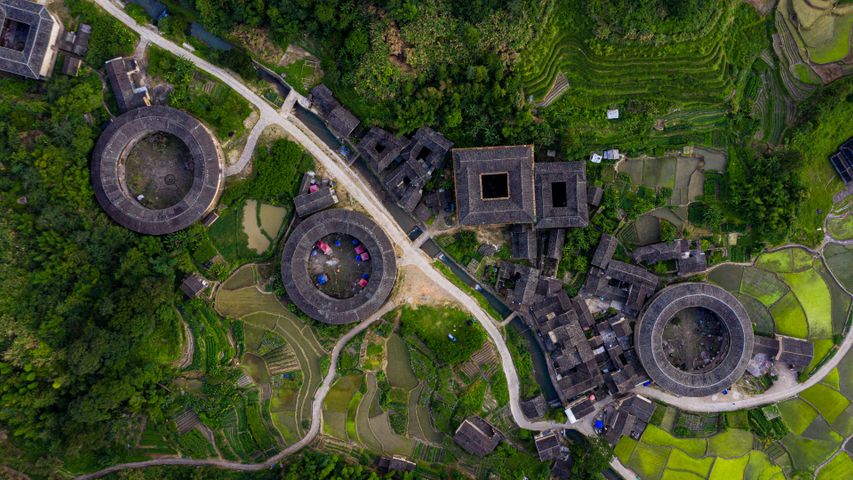Petronas Twin Towers, Kuala Lumpur, Malaysia
© tampatra/Getty Image
A pair of high achievers. Skyscraper Day
The Petronas Twin Towers are the unmistakable calling card of the Malaysian capital city of Kuala Lumpur, affectionately called KL. The 88-story, 1,483-foot cylindrical towers were the tallest buildings in the world when they were completed in 1996, until 2004 when Taiwan's Taipei 101 topped them by almost 200 feet. Still the tallest twin skyscrapers in the world, they're our perfect inspiration today on Skyscraper Day, set aside to appreciate such engineering and architectural feats.
The Petronas Towers, named for Malaysia's state-owned oil and gas company, were designed by the late Argentine American architect César Pelli, who incorporated motifs of Islamic art into his postmodern design. It remains his masterpiece, and a true standout in a country and continent full of skyscrapers. One of the most notable features of the buildings is a two-level skybridge that connects the towers at the 41st and 42nd floors. The bridge is not actually anchored to the main structure, but freely slides into each tower to accommodate any swaying caused by wind.
The preponderance of supertall structures in Asia isn't a coincidence. Skyscrapers spring up where populations are high, land is in short supply, and economies flourish. Plus, for an up-and-coming city, nothing says you've arrived like a gleaming skyscraper—or a pair of them. And why stop there? Even the Petronas Towers, though emblematic of the KL skyline, are no longer the tallest kids on the block in Malaysia: A new skyscraper, the 2,227-foot Merdeka 118, is expected to be completed in 2023 as the second-highest building in the world.
Related Images
Bing Today Images




 Vila Franca Islet, São Miguel Island, Azores, Portugal
Vila Franca Islet, São Miguel Island, Azores, Portugal
 Mona Vale Rockpool, Sydney, Australia
Mona Vale Rockpool, Sydney, Australia
 Tea garden at Yangjiatang Village, Songyang County, China
Tea garden at Yangjiatang Village, Songyang County, China
 Aerial view of Khao Sok National Park, Surat Thani, Thailand
Aerial view of Khao Sok National Park, Surat Thani, Thailand
 Great Blue Hole, Belize
Great Blue Hole, Belize
 Fujian Tulou complex of historical and cultural heritage buildings in Fujian province, China
Fujian Tulou complex of historical and cultural heritage buildings in Fujian province, China
 Road to Hana, Maui, Hawaii
Road to Hana, Maui, Hawaii
 Zelenci Nature Reserve, Slovenia
Zelenci Nature Reserve, Slovenia

